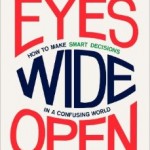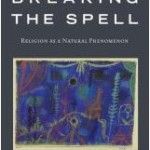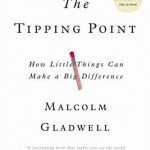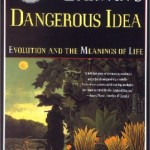In Consciousness Explained, Daniel Dennett puts forwards his theory of consciousness. Below, I have done my best to explain my understanding of the concept idea, and several other interesting ideas that he puts forward. However, that is assuming I have understood it correctly, and I would not want to bet a significant amount on that.
Consciousness
Take two dots that take it on turn to go on and off, each one a different colour. If you watch this you will see the dots changing from one colour to the other. However, they don’t. They just take it in turn to go on and off. It’s known as “colour phi phenomenon”.
There is an online demonstration here, though I have to admit that I was completely unable to recreate the effect.
Lets assume the demo does work though. What is going on here? The continuous motion the brain sees must be invited by the brain. In a traditional Cartesian theatre model in which Descartes suggests there is a mind inside our head watching everything, we have two options.
It could be a Orwellian revision. That is to say our body sees the two spots separately but then goes back and tampers with the memory to add the motion. Just as in 1984, they went back and re-wrote history. It could also be a Stalinesque revision. Much like Stalin’s show trials, our brain never sees the truth, but merely a fakery concocted by the brain for the purposes of the mind.
Dennett puts forward the Multiple Drafts model. This replaces the Cartesian theatre all together and suggests that nobody is actually looking. We record it, but don’t have consciousness until we actually look, at which point our brain has made a conclusion without actually filling the rest in. There is no tampering, our brain simply takes in the information of the two dots and assumes that it must be motion because there is no evidence to contradict this.
Taste
We taste with our nose as tongues can only detect the basic five tastes (four according to Dennett). The rest is with the nose.
Hallucinations
Strong hallucinations are impossible. You cannot touch a ghost for example. This is important because it is good evidence the mind makes it up. Simply seeing a ghost is easy for the mind to make up. However, to actually touch, get feedback, would be far more difficult for the mind to do.
Beer
Beer is not an acquired taste. If the taste remained as bad as the first time you try it, you would never drink it. What happens is that the taste changes to you. A subtle but important difference.
Pain
Pain is evolutionary useful, but not all pain. What is the point of being pain from gallstones for example? However, in general, pain is a result of evolution because it serves a useful purpose. It tells us to avoid harmful activities.
For this reason, it may be sensible to assume that trees do not feel pain. As they cannot run away, there seems to evolutionary purpose for developing the ability to feel pain.
It is also worth noting that ideas cannot cause physical pain. Imagine yourself being kicked in the shins. It feels uncomfortable, but not physically painful. This is interesting because people often call anxiety “uncomfortable”. Whereas any anxiety suffer knows, it causes physical pain. And there is a distinct difference, as this mental exercise shows.
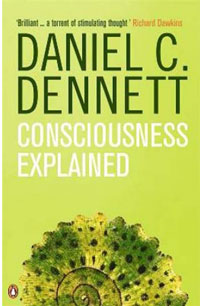
Don't have time to check my blog? Get a weekly email with all the new posts. This is my personal blog, so obviously it is 100% spam free.
Tags: consciousness, daniel dennett, descartes, psychology
This entry was posted on Monday, January 19th, 2015 at 11:17 am and is filed under Books. You can follow any responses to this entry through the RSS 2.0 feed. Both comments and pings are currently closed.
